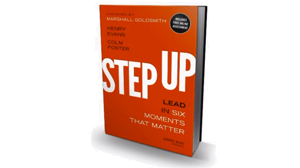
Our guest velocity guru is executive coach Henry Evans. His book Step Up is an Amazon Top 10 business book and his is CEO of Dynamic Results. In this article, Henry offers advice on setting clear expectations to achieve maximum results.
Recently, I wrote about both the importance of creating clear expectations with visual associations, and making sure you get reflection back from your people. This insures that you’re more focused on understanding what they heard, rather than on what you said.
Our clients are outperforming their industries in a big way — they are market leaders in over twenty-eight segments. One reason they out-perform their competitors is the language they use. Here are a few ways that different functions in your company can leverage language to gain a competitive advantage.
Let’s start with your sales team. They go into client meetings focused on creating both crystal clarity and visual expectations and then getting reflection back from those clients before writing an order. Imagine your team never assuming they understand what the client wants, and are constantly reflecting and paraphrasing what they heard to ensure clarity. And, more importantly, by doing that, they are always building the client’s confidence that they’ve been clearly understood before the order is written. Our experience shows that this team would lead the rest of your organization in exceeding clients’ expectations. This simple practice is overlooked by too many sales teams.
But your company doesn’t just run on sales.
Let’s look at your back end — let’s look at IT. What if your IT pros hear unclear requests like “Hey, can you make my computer work better so I can multitask?”, and your people start to reflect what they think was really meant? They might say “What I hear you saying is that you really need to see a split-screen on your laptop, with your training video on one side and you making notes in Word on the other side. Is that right?”
In creating this reflection by paraphrasing, they’d be either affirming their understanding or clarifying it. They begin to deliver better service by simply tweaking their language when requests and commitments are being made.
Now let’s look at executive meetings (where I spend most of my time working with leaders). If you want to drive results through accountability, you need to change the way you’re making and requesting your commitments. What if executive meetings sounded less like “Let’s get our employees more engaged,” and more like “I suggest that we need a 5% drop in attrition by September thirtieth, and that we raise our engagement survey score by an average of 2%.”
Clarity takes time, and we know how busy you are. That being understood, we’re suggesting that taking a few extra moments to set clear expectations before a project starts will save a lot of time in the long run.
When I was a process consultant, I would hear companies, particularly in manufacturing, justify terrible and wasteful manufacturing practices. They were basically stating that they didn’t have time to make something right the first time; but always had time and resources enough to do it over again. For them “accountability” was just a word.
Doing things more than once because of an accountability gap didn’t make sense then, and it doesn’t make sense today.
Learn More

Learn more about this accountability technique with this video.
About the author

Founder and Managing Partner, Dynamic Results
Henry Evans specializes in Executive Coaching and Change Management and Strategic Implementation services. He is author of Winning With Accountability: The Secret Language of High Performing Organizations, which is in wide use by multi-national corporations, and co-author of Step Up, Lead in Six Moments that Matter, which is an Amazon Top 10 business book and also one of Inc. Magazine’s Top 5 recommended business reads for 2014.













